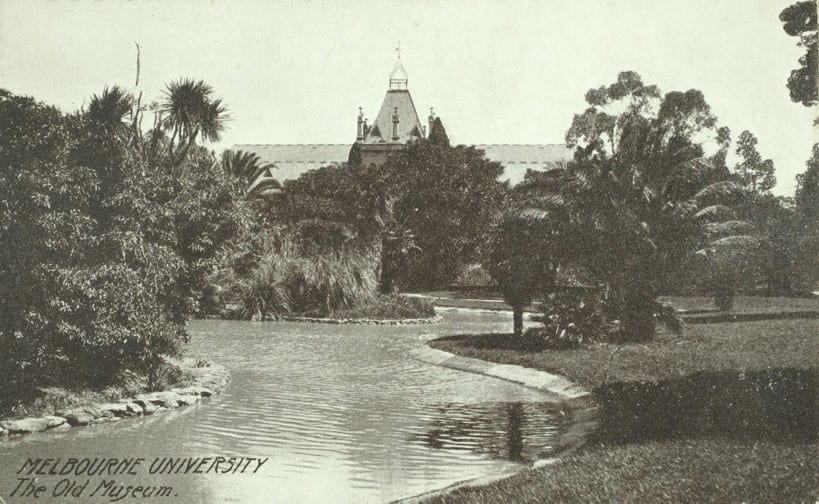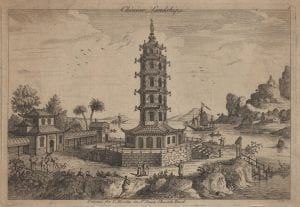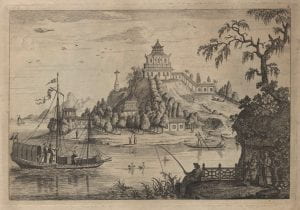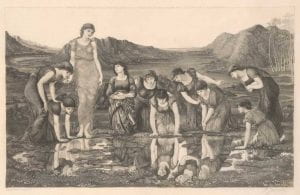Journeys of the Imagination – Postcards from the Archives
by Melinda Barrie, Archivist, University of Melbourne Archives.
Working with a wide range of collections in the University Archives I struggle to choose a favourite item or series. But after much consideration I keep coming back to the postcards. Why do they fascinate? I think the attraction rests with their potential to act as a tangible reminder of personal experience and past adventures with family and friends. For me, the pleasure of receiving a postcard lies in those first few moments after retrieving the travel worn card from my letterbox and the experience of feeling a connection to the author as they speak directly to me from a far-off, sometimes exotic place. The picture, colourful stamp, postmark, and the handwritten message all contribute to creating a sense of place and time.
In contrast, the postcards I have sent during this time of the Covid 19 pandemic via an online ‘Australia Post app’ have focused inwards on aspects of my life at home inside my ‘five to twenty-five kilometre bubble’ – domestic life, plants, the moon in the sky. The intent was not to replace the close contact of my physical presence with others – but to let family and friends know I am thinking of them. This I believe is the likely purpose of many of the postcards in UMA’s care.
UMA’s collection of postcards show a myriad of landscapes, places, experiences and past practices of the university and its population across time. An example is Joseph Burke, former Herald Chair of Fine Arts who collected the postcards he received throughout his life. They show the breadth of his club involvement, grand tours, professional interest in the art world and his social circles both public and private.
Figure 1 ‘St Vitale – The Jews Revolt’, Ravenna, 12 July 1953, PO/272, 1978.0039, Joseph Terence Burke Personal Papers, University of Melbourne Archives
Figure 2 ‘St Sophia Museum, Istanbul’ verso 3 March 1961, PO/270, 1978.0039, Joseph Terence Burke Personal Papers, University of Melbourne Archives
Other examples collected for official reasons are the 1900s postcard of Philip Marcham who is standing near the Law Library holding his bell. Marcham was formerly employed as the University bellringer and porter and his presence serves as a reminder of occupations and rituals that are now long extinct. Postcards also serve as evidence of the changing landscape of the University grounds which is exemplified by the postcard of the lake surrounded by flora which no longer exists.
Figure 3 Marcham, the bellringer, circa 1890 – 1910. 2017.0071.00330 University of Melbourne Photograph Collection, University of Melbourne Archives.
Figure 4 The Old Museum University of Melbourne, 1997.0013.00002 University of Melbourne Photograph Collection, University of Melbourne Archives.
UMA holdings contain hundreds of postcards and the collection as a whole provides a fascinating montage of personal experience, landscape, ritual, built heritage and environment. Many of the postcards at UMA can be found online for research and study purposes.







